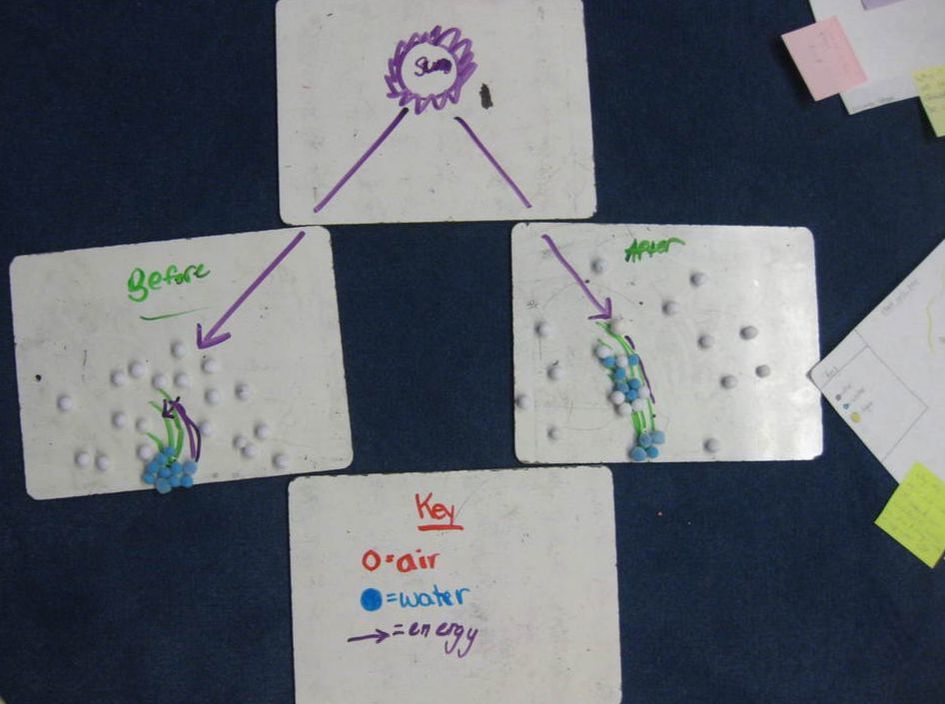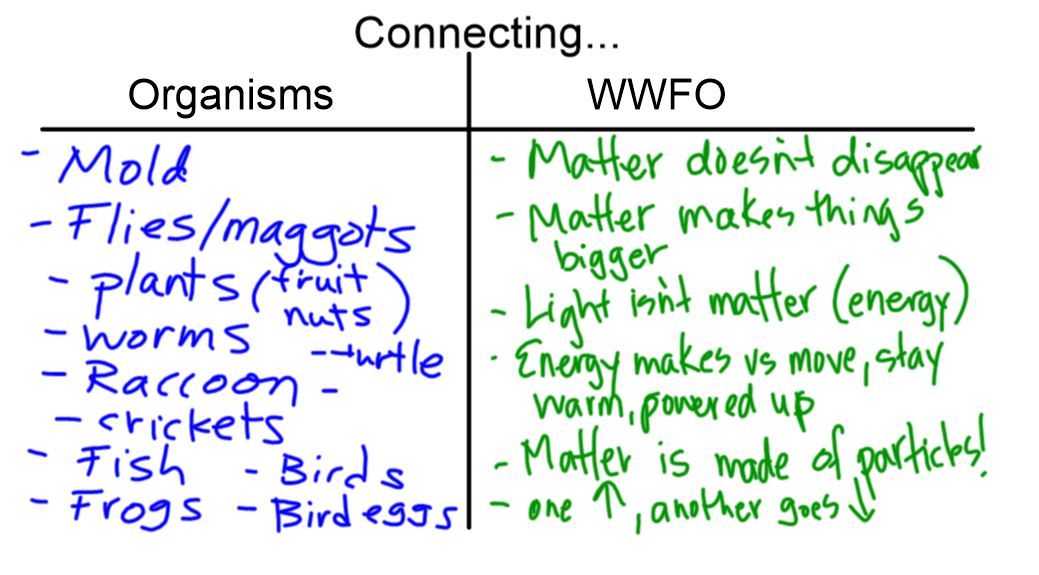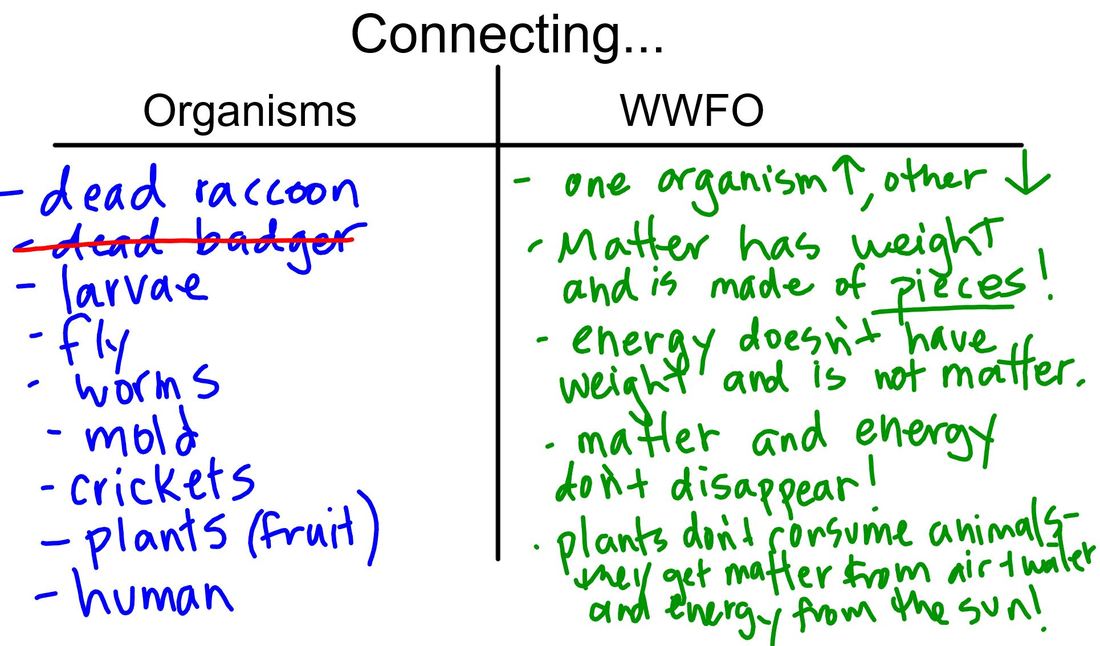After looking at each group's revised model of how plants grow, we had a lot to reflect upon. So we sat in a scientists' circle and students recognized that they were certainly critical of others (and maybe we're the most keen on getting feedback from others they admitted).
So we set off to see how we could best represent this "plant growth" phenomenon, and decided the best way to show plant growth was with two plants--a before and an after.
So we set off to see how we could best represent this "plant growth" phenomenon, and decided the best way to show plant growth was with two plants--a before and an after.
We had an interesting conversation about what was really happening with the air and water as the plant was using it to grow. We figured out that as the plant was getting bigger, the air and water would have to be getting smaller. Ultimately (and somehow in a process we don't really get yet in 5th grade), the air and water become a taller plant or a new plant part. Of course, this only happens when light energy is present.
Mrs. Brinza found some pom-poms, and we built a physical model to show this:
Mrs. Brinza found some pom-poms, and we built a physical model to show this:
Students really wanted to show the energy going into the plant, and since it's not matter, we agreed that light can be shown in an arrow and shouldn't be shown as a particle, like air and water could be. We also agreed that plants should have energy everywhere in them, as all plant parts are consumed by some other organism. For example, some organisms eat leaves, others eat roots, and others eat the fruit. Since all these parts allow the organisms that eat them the ability to move, get power, or help make them stay warm, we know energy is everywhere in the plant.
Our model is reflects upon the phenomenon of how plants grow from both a matter and energy perspective, and it took quite some time to figure this out.
But how on earth does this all relate back to where we started, with this???
Our model is reflects upon the phenomenon of how plants grow from both a matter and energy perspective, and it took quite some time to figure this out.
But how on earth does this all relate back to where we started, with this???
We agreed that it was time to connect all the stuff we figured out back to the anchoring phenomenon for our unit--the dead raccoon! Students suggested we revise our model yet again, to show what happens to the raccoon and answer our Driving Question for the Unit, "Why do dead things disappear?"




 RSS Feed
RSS Feed